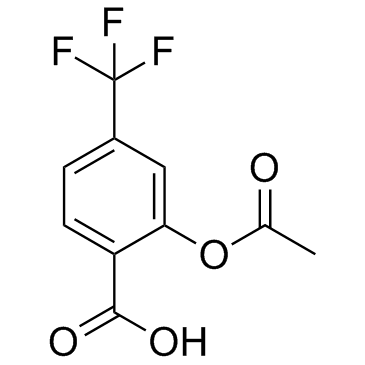Electrochemical behavior of triflusal, aspirin and their metabolites at glassy carbon and boron doped diamond electrodes.
Teodor Adrian Enache, Orlando Fatibello-Filho, Ana Maria Oliveira-Brett
文献索引:Comb. Chem. High Throughput Screen 13(7) , 569-77, (2010)
全文:HTML全文
摘要
The electrochemical behavior of triflusal (TRF) and aspirin (ASA), before and after hydrolysis in water and in alkaline medium using two different electrode surfaces, glassy carbon and boron doped diamond, was study by differential pulse voltammetry over a wide pH range. The hydrolysis products are 2-(hydroxyl)-4-(trifluoromethyl)-benzoic acid (HTB) for triflusal and salicylic acid (SA) for aspirin, which in vivo represent their main metabolites. The hydrolysis processes were also followed by spectrophotometry. The UV results showed complete hydrolysis after one hour for TRF and after two hours for ASA in alkaline solution. The glassy carbon electrode enables only indirect determination of TRF and ASA through the electrochemical detection of their hydrolysis products HTB and SA, respectively. The oxidation processes of HTB and SA are pH dependent and involve different numbers of electrons and protons. Moreover, the difference between the oxidation peak potential of SA and HTB was equal to 100 mV in the studied pH range from 1 to 8 due to the CF3 of the aromatic ring of HTB molecule. Due to its wider oxidation potential range, the boron doped diamond electrode was used to study the direct oxidation of TRF and ASA, as well as of their respective metabolites HTB and SA.
相关化合物
| 结构式 | 名称/CAS号 | 分子式 | 全部文献 |
|---|---|---|---|
 |
三氟醋柳酸
CAS:322-79-2 |
C10H7F3O4 |
|
Long-term follow-up of atrial fibrillation patients in the N...
2009-09-01 [Rev. Esp. Cardiol. 62(9) , 992-1000, (2009)] |
|
A phase I study to characterize the multiple-dose pharmacoki...
2011-12-01 [Expert Opin. Drug Metab. Toxicol. 7(12) , 1471-9, (2011)] |
|
Comparative bioavailability study of triflusal oral solution...
2010-01-01 [Arzneimittelforschung 60(1) , 36-41, (2010)] |
|
Gastrointestinal safety of triflusal solution in healthy vol...
2011-07-01 [Eur. J. Clin. Pharmacol. 67(7) , 663-9, (2011)] |
|
Triflusal: an old drug in modern antiplatelet therapy. Revie...
2009-01-01 [Hellenic J. Cardiol. 50(3) , 199-207, (2009)] |